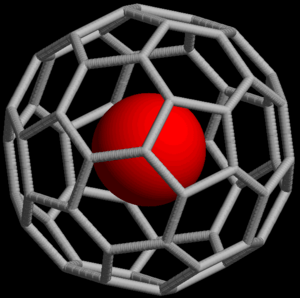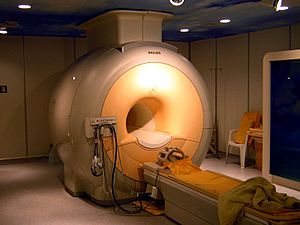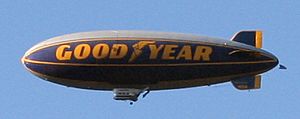Noble gas facts for kids
The noble gases are a special group of elements. They are all gases and are found in group 18 of the periodic table. Each molecule of a noble gas is made of just one atom. This is why they are called monoatomic.
Noble gases almost never react with other elements. This is because their outer electron shell is full with 8 electrons. Think of it like a full backpack – there's no room for anything else!
There are six noble gases:
All these gases are found in the air around us. They make up about 0.96% of our atmosphere. Sometimes, scientists can make special Noble gas compounds from them.
Contents
How are Noble Gases Used?
Noble gases have many cool uses because of their unique properties.
Using Noble Gases for Cooling
Noble gases have very low boiling and melting points. This means they stay liquid or gas at extremely cold temperatures. Because of this, they are great for cooling things down to super cold levels.
For example, liquid helium boils at a super chilly -269 degrees Celsius (4.2 Kelvin). It is used to cool special superconducting magnets. These magnets are important in machines like MRI scanners. MRI scanners help doctors see inside the body.
Noble Gases in Breathing Mixtures
Helium is also used in special breathing gases. It replaces nitrogen for scuba diving. When divers go deep, the pressure can cause nitrogen to have an anesthetic effect. This is called nitrogen narcosis. Helium is less likely to dissolve in the body's fluids. This helps divers avoid feeling "narced" or confused underwater.
Noble Gases in Airships
Remember the famous Hindenburg airship disaster in 1937? It used hydrogen, which is very flammable. After that, helium became the gas of choice for blimps and balloons. It's still light enough to lift things. Plus, it doesn't burn, making it much safer!
Noble Gases for Protection
In many cases, noble gases are used to create a safe, non-reactive environment. This is called an inert atmosphere. It means the gas won't react with other chemicals. This protects sensitive materials or processes.
Noble Gases in Lights
Noble gases are often used in lighting because they don't react with other chemicals.
- Argon is mixed with nitrogen in regular incandescent light bulbs. It helps the filament last longer.
- Krypton is used in high-performance light bulbs. These bulbs are brighter and more efficient.
- When noble gases are put inside special glass tubes and electricity is passed through them, they glow! This is how "neon lights" work. Even though they are called neon lights, they often contain other noble gases or chemicals to make different colors. Neon itself glows orange-red.
- Xenon is used in powerful xenon arc lamps. These lamps produce a bright light that looks like daylight. They are used in movie projectors and car headlamps.
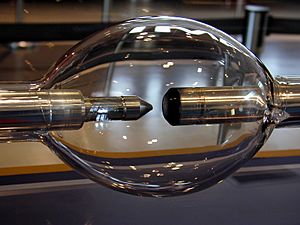
Noble Gases in Lasers
Noble gases are used in special lasers called excimer lasers. These lasers are used for very precise work. They help make tiny parts for integrated circuits (like the chips in your phone or computer). They are also used in laser surgery, including eye surgery.
Noble Gases in Medicine
Some noble gases have direct uses in medicine:
- Helium can help people with asthma breathe easier.
- Xenon is used as an anesthetic (a medicine to make you sleep during surgery). It works well and leaves the body quickly, so patients recover faster. Xenon can also be used for special MRI scans of the lungs.
- Radon is a radioactive noble gas. It is used in very small amounts for radiotherapy to treat certain illnesses.
Noble Gases in Space Travel
Noble gases, especially xenon, are used in ion engines for spacecraft. Since these engines don't use chemical reactions, an inert fuel like xenon is perfect. It won't react with the engine parts, making the engine safer and more reliable for long space missions.
What Colors do Noble Gases Glow?
When electricity passes through noble gases in special tubes, they glow with different colors. Radon is radioactive, so it's usually not used for lighting. Here's what the others look like:
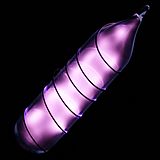 |
 |
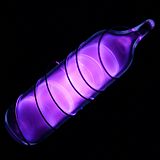 |
 |
 |
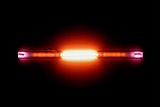 |
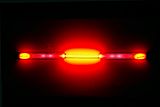 |
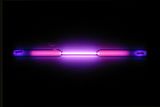 |
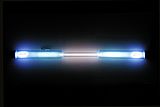 |
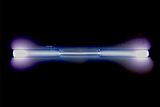 |
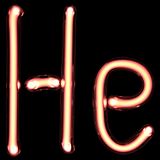 |
 |
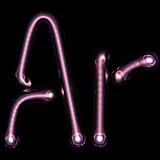 |
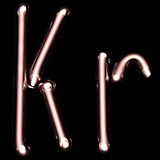 |
 |
| Helium | Neon | Argon | Krypton | Xenon |
Images for kids
See also
 In Spanish: Gases nobles para niños
In Spanish: Gases nobles para niños


